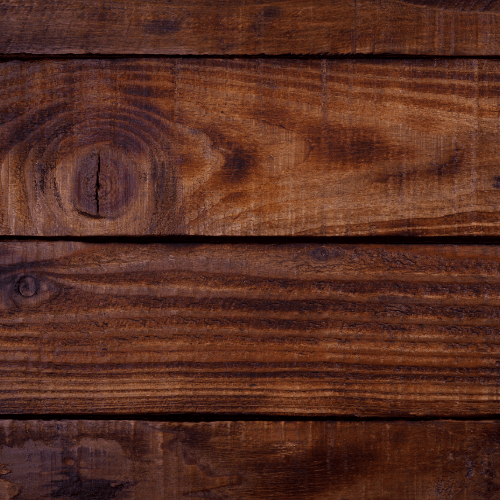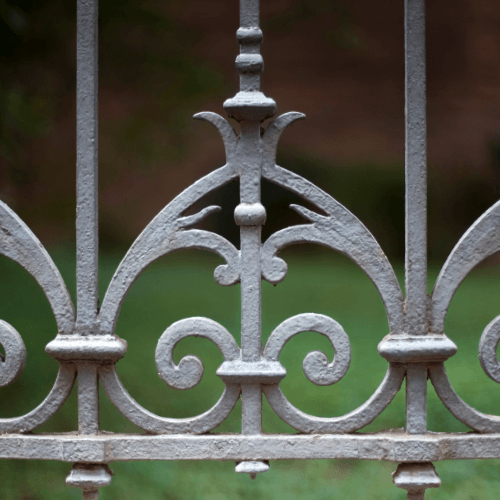Interior Walls
Reason:
Increased humidity
Solution:
In case that the blots are caused by the accumulated humidity, initially it’s essential to be faced the reasons that caused it and then we should let the surface dry.
Cleaning of the surface with anti-mold or liquid bleach in solution with water is required.
This procedure is recommended to be done at least twice.
Then apply waterbased primer Tetradur of TETRALUX if there are loose spots.
Then two layers of antimould, thermoceramic, energy, emulsion paint Thermolux interior of TETRALUX.
Reason:
The reason is the bad quality of the paint or the application to a very thin layer.
Solution:
- Clean the surface from the dust.
- Use water-based primer Tetradur of TETRALUX.
- Apply two layers of ecological emulsion paint Super Ecolux or Elite of TETRALUX.
Reason:
The paint has not adhered well due to:
- Inadequate surface preparation (application of paint on a very absorbent surface without being primed).
- Application of bad quality paint.
- Application of paint at very low temperatures.
- Traped moisture on the wall.
- Apply paint to a new wall before the expiration of one month required for the surface to regulate its excessive alkalinity.
Solution:
In case the peeling is due to accumulated moisture, it is necessary to first address the causes that caused it and to allow the drying time to elapse.
The following procedure is then recommended, which is also applied to the other causes:
- Cleaning the surface by scraping or sanding and dulling where necessary.
- Priming with Tetradur water primer of TETRALUX.
- Painting the wall with two hands with ecological plastic paint Super Ecolux or TETRALUX Elite.
Causes:
- Bad trim (the trimmed surface is different from the rest of the wall).
- Application of paint with low opacity.
- Excessive colour dilution.
Solution:
- With bad stucco it is necessary to improve the stucco surface and then the following procedure is recommended which is common to all other causes.
- Painting two coats of the ecological plastic paint Super Ecolux or Elite of TETRALUX.
Why do cracks appear on the surface of the surface?
Causes:
- Use of poor quality putty.
- Application of paint to stained areas that have not been primed.
- Painting with poor quality paints.
Solution:
- Sanding with sandpaper and good cleaning of the surface.
- Painting with Tetradur water primer from TETRALUX.
Causes:
From excessive dilution of the paint or from the application of poor quality paint with low opacity.
Solution:
Painting the wall with TETRALUX Super Ecolux or Elite plastic ecological paint.
Causes:
- Painting with poor quality plastic paint.
- Excessive dilution of the paint.
- Poor paint application technique resulting in uneven spreading.
Solution:
Painting the surface with two coats of TETRALUX's Super Ecolux or Elite plastic ecological paint.
Causes:
- Very vigorous stirring - stirring a half-filled container
- Use of poor quality paint
- Vigorous stirring of the diluted paint in the container.
Solution:
- Scrubbing and cleaning of the surface
- Application of two coats of TETRALUX Super Ecolux or Elite plastic paint.
Causes:
- Use of poor quality paint.
- Application with paint in a very thick layer.
- Painting paint on a non-primed surface.
Solution:
- Scrubbing and cleaning of the surface.
- Painting with the TETRALUX water primer Tetradur.
- Two coats of TETRALUX's Super Ecolux or Elite plastic ecological paint.
Causes:
- There is a strong presence of nicotine in the area due to smoking.
- Accumulated moisture.
- The space where the surfaces are not adequately ventilated or are too close to heat sources.
Solution:
If the yellowing is due to accumulated moisture, it is necessary to first treat the yellow spots.
the causes that caused it and to allow the necessary drying time to elapse.
The following procedure is then recommended, which applies to the other causes:
- Cleaning of the surface
- Application of one layer of TETRALUX Velatura
- Application of two coats of TETRALUX's Super Ecolux or Elite eco-friendly plastic paint.
External Walls
Causes:
No good adhesion of the paint has been done which may be due:
- Poor surface preparation (application of paint to a very absorbent surface without priming).
- Application of poor quality paint.
- Application of paint at very low temperatures.
- Trapped moisture in the wall.
- Application of paint to a new wall before the one month required for the surface to adjust its excessive alkalinity.
Solution:
In case the peeling is due to accumulated moisture, it is necessary to first address the causes that caused it and to allow the drying time to elapse.
The following procedure is then recommended, which is also applied to the other causes:
- Cleaning the surface by scraping or sanding and dulling where necessary.
- Priming with Tetradur water or solvent primer of TETRALUX.
- Painting the wall with two hands with Monolux elastomeric insulating paint or with TETRALUX Super 100% acrylic paint.
Causes:
Poor quality plaster which "pops" and creates hairline cracks.
Solution:
- Priming with TETRALUX Tetradur water or solvent based primer.
- Painting the exterior walls with two coats of Thermolux thermal insulating energy thermo ceramic paint with added anti-moisture paint from TETRALUX.
Causes:
From excessive dilution of the paint or from the application of poor quality paint with low opacity.
Solution:
Painting the wall with 100% acrylic Super paint of TETRALUX.
Causes:
- Application of paint to poor quality plaster that has hairline cracks.
- Painting a wall with a very thin layer of paint.
- Application of poor quality paint.
Solution:
- Painting one hand with TETRALUX Tetradur solvent or water based primer.
- Painting the wall two-handed with TETRALUX's Monolux insulating wall paint.
Causes:
- Painting a wall with a very thin layer of paint (excessive dilution during use).
- Application of poor quality paint.
Solution:
- Cleaning the surface from dust.
- Application of the TETRALUX water or kidney primer Tetradur.
- Painting the walls of the house two hands with acrylic paint 100% Super of TETRALUX.
Causes:
They were not adequately covered by the paint because:
- There was bad trimming (the trimmed surface is different from the rest of the wall).
- Application of paint with low opacity.
- Excessive dilution of the paint.
Solution:
For the first cause (bad trimming) it is necessary to improve the trimming surface and then the following procedure is recommended, as for the other causes:
Wall painting with two coats of 100% Super acrylic paint by TETRALUX.
Causes:
- Painting with poor quality paint
- Application of paint to a new wall before the one month required for the wall surface to adjust its excessive alkalinity.
- Application of acrylic paint on a non-primed surface.
- Painting the wall in shades of yellow or red that are less resistant to intense solar radiation
Solution:
Painting the wall with 100% Super top quality acrylic from TETRALUX
Causes:
They usually occur due to the application of paint in conditions of increased humidity.
Solution:
It is recommended to paint the surface with one hand with 100% TETRALUX Super acrylic paint in normal conditions.
Causes:
- Before painting the surface, the salts that were present were not removed.
- There were capillary cracks from which moisture penetrated, carrying water-soluble salts to the outer surface.
- Moisture was present inside the wall or was expelled (exhaled) by carrying away water-soluble salts from the plaster or concrete.
- There is increased ambient humidity which, due to a thin layer of paint, has penetrated and when it comes out it drags salts.
Solution:
In the case that the white spots are caused by moisture, it is necessary to first address the causes and allow the necessary drying time to elapse.
Then we follow the following procedure:
- Scrub the surface, remove the salts and rinse with clean water.
- Prime with Tetradur water or kidney primer from TETRALUX.
- Paint two hands with acrylic 100% cement-based Super or TETRALUX Monolux vertical surface insulator.
Causes:
Increased moisture content (surfaces that are not exposed to the sun).
Solution:
- Cleaning the surface of the external wall.
- Painting the external wall with Tetradur water or Tetralux kidney primer.
- Painting the exterior wall of the house with Thermolux Therm olux, insulating, elastomeric paint (adding strong anti-moisture paint) from Tetralux.
Wooden Surfaces
Causes:
- Natural shade of wood.
- By the number of layers applied.
Causes:
- Excessive dilution of the paint.
- Application of paint in a very thick layer.
- Application of the paint at low temperatures and humidity.
Solution:
- Rubbing the surface.
- Coating with a layer of water repellent or Tetralac TETRALUX water-based or solvent-based repellent.
Causes:
- Excessive dilution of the paint.
- Poor application of substrate (primer).
- Absence of substrate (primer).
Solution:
- Rubbing the surface.
- Application of one coat of TETRALUX water or solvent-based acrylic.
- Painting one or two coats of TETRALUX repoline.
Causes:
- Poor technical application of the paint.
- Painting with poor quality paint.
- Application of paint on dirty surfaces (powders, oils, etc.).
Solution:
- Rubbing of the surface
- Application of one coat of TETRALUX water or solvent based velatour.
- Painting one or two hands with TETRALUX water or solvent repellent.
Causes:
- Use of poor quality repoline.
- Natural alteration of the whiteness of the colour over time.
- The painted surface is in a dark place.
- The painted surface is located in an area with a high concentration of nicotine due to smoking.
Solution:
- Rubbing the surface.
- If the surface is yellowed enough, it is necessary to apply a coat of water-based or Tetraprimer Tetraprimer.
- Painting one or two coats of water or Tetralac TETRALUX water-based or solvent-based repellent.
Causes:
- Very thick layer of colour.
- Painting of repoline at inappropriate temperatures.
- Applying a second coat of paint while the first one was not dry.
Solution:
Ripoline:
Scrubbing the surface and painting one or two hands with water repellent or Tetralac solvent
of TETRALUX.
Varnish:
Sanding of the surface and painting in one or two coats with Tetramarine marine varnish by TETRALUX.
Causes:
- Removal of the varnish film from the wood.
- Accumulation of moisture in the varnish layer before it dries.
Solution:
- Rubbing the surface.
- Paint one or two coats with Tetramarine marine varnish or TETRALUX acrylic water varnish.
Causes:
- Poor technical application of the paint.
- Painting with poor quality paint.
- Application of paint on dirty surfaces (powders, oils, etc.).
Solution:
- Rubbing the surface.
- Application of one coat of Tetramarine TETRALUX solvent marine varnish.
- Painting one or two hands with TETRALUX acrylic water varnish.
Causes:
- Vigorous stirring of the half-filled container.
- Poor paint application technique with inappropriate tools (rollers, brushes, etc.).
- Application of paint at high temperatures.
Solution:
Ripoline:
Surface sanding and painting with Aqua Primer or Tetralux water or solvent based primer. Painting one or two coats of paint with TETRALUX water or solvent repellent.
Varnish:
Sanding the surface and painting one or two hands with Tetramarine marine varnish or TETRALUX acrylic water varnish.
Metallic Surfaces
Causes:
- Because we painted with poor quality paint.
- We applied the oil paint at very low temperatures and in conditions of increased humidity.
- By painting we applied a thick layer of paint.
Solution:
If after a reasonable period of time the paint has not dried, the following procedure is recommended:
- Cleaning the surface with a solvent or corrosive.
- Painting one or two coats of TETRALUX Tetrarust anti-corrosive.
- Application of one coat of TETRALUX Tetralac varnish.
Causes:
- Very thick layer of colour.
- Application of paint at inappropriate temperatures.
- Painting second coat of varnish while the first coat is not dry.
Solution:
- Rubbing at the points where wrinkles appear.
- Painting with one or two coats of TETRALUX's Tetralac varnish.
Causes:
- From excessive dilution of the paint.
- Application of poor quality paint with low opacity.
- Painting oil paint with a very thin layer.
- Painted surface that has not dried due to increased humidity.
- Normal deterioration of the colour due to exposure to sunlight for a long period of time.
Solution:
- Rubbing of the surface
- Application of one coat of Tetrarust anticorrosive TETRALUX.
- Painting with one or two coats of TETRALUX Tetralac varnish.
Causes:
- Application of oil paint on a dirty surface or on a glossy (galvanized, stainless steel, etc.), non-primed surface.
- Painting with very low quality oil paint.
Solution:
- A very good sanding with sandpaper of the surface in order to remove the paint completely.
- On glossy surfaces, painting with a special primer for galvanized-glossy surfaces.
- Painting with two coats of Tetralux Tet ralac oil paint.
Causes:
- Application of paint to a primed surface that has not dried
- Painting the oil paint on a non-primed surface
- Poor application technique (on oil, rust, or untreated surfaces)
Solution:
- Good sanding of the surface
- Application of one layer of Tetrarust anticorrosive TETRALUX.
- Recoat one or two coats of TETRALUX Tetralac varnish.
Causes:
There is normal wear and tear due to weathering over time or it was painted with poor quality oil-based paint or intense moisture before the paint dried.
Solution:
Sanding with sandpaper and cleaning the surface with a cloth soaked in turpentine and then painting one or two hands with Tetralac varnish from Tetralux.
- Incorrect paint application technique resulting in not covering all parts of the surface and especially the corners.
- Application of poor quality oil paint or application in a very thin layer.
Solution:
Careful sanding of the surface with sandpaper and after it has been properly cleaned, apply a layer of Tetralux Tetrarust anticorrosive.
Once dry, repaint one or two coats with Tetralac varnish from Tetralux.
Causes:
- Excessive dilution of the oil yeast.
- Painting the varnish in a very thick layer.
- Application of the paint at very low temperatures and humidity.
Solution:
- Rubbing the surface.
- Painting with one or two coats of TETRALUX Tetralac varnish.
Causes:
- Vigorous stirring of the half-filled container.
- Poor application technique of oil paint with improper tools (brushes, rollers, etc.).
- Application of paint at high temperatures.
Solution:
- Sanding the surface with sandpaper and wiping with a cloth dampened with turpentine.
- Painting one or two hands with TETRALUX Tetralac oil paint.
Causes:
- Poor paint application technique (roller or brush).
- Application of varnish paint at high temperatures.
Solution:
- Rubbing the surface.
- One or two coats of Tetralac varnish of TETRALUX.









